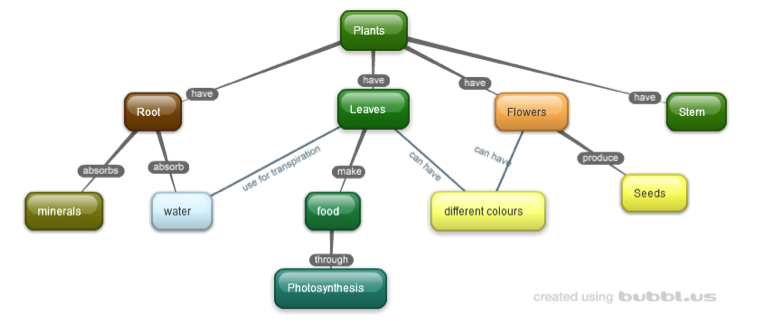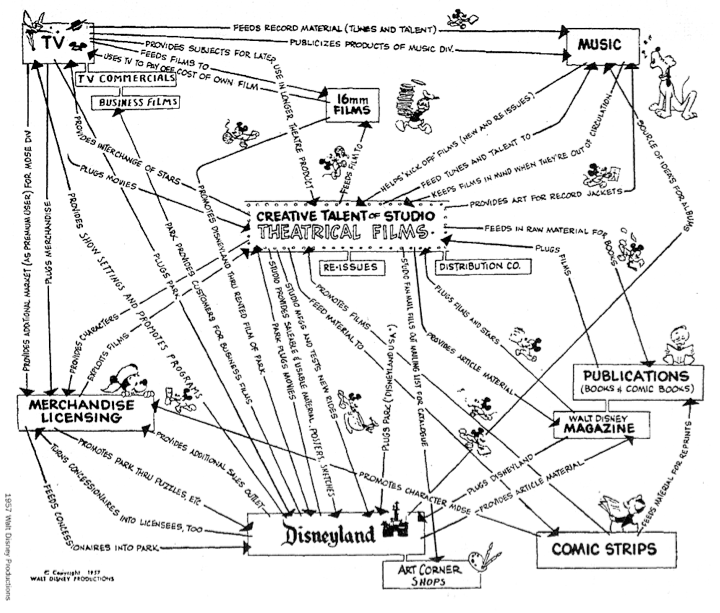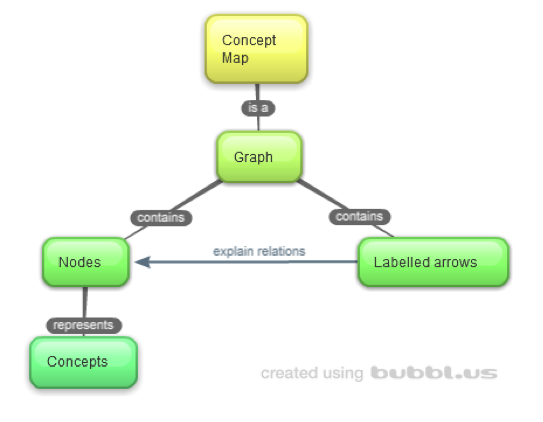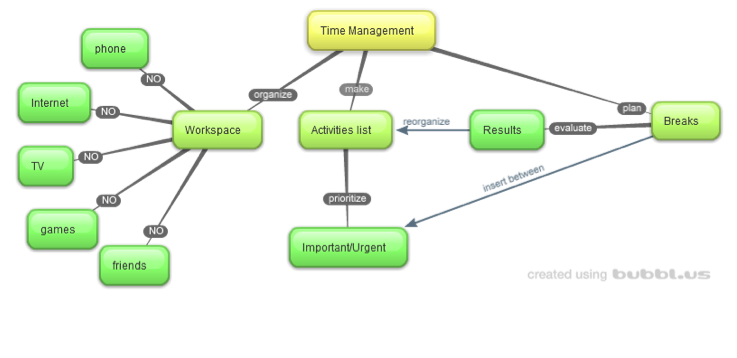A concept map graphical represents the relationships between concepts or ideas and helps in organising and structuring the information. Concept map has a central concept branches in relations with other concepts. The concepts are represented in circles or squares connected by labelled arrows with other concepts forming a tree.
Concept map structure:
- Nodes
- Labelled arrows
Type of relationships between concepts can be: is a, consist of, contains, question, demand, define, and contribute. General concepts occupy high positions in the structure and concepts that have the same element are grouped on the same branch.
A concept map is context-dependent knowledge. The same knowledge, in another context, can form another concept map.
As Mind map, conceptual maps stimulates through the graphic entities, several areas of the brain thereby facilitating understanding, memorising and creating.
A conceptual map can be drawn by hand or by using a software application.
Uses of Concept map:
- Synthesising concepts and relationships between them
- Taking notes
- Representing relational information (problem solving with alternative solutions grammatical structure of a language entities, organisational structure in an institution, structure concepts on a field of study, professional development, concepts and arguments, errors in a system)
- Understand text summaries by logical representation
- Brainstorming – creativity
- Software design (class structure, the structure of HTML pages, organising of files)
- Representing a learning plan
Example – concept map that represents structure and functions of plants designed with a software application.

Example – Sample of a concept map created in 1957 by Walt Disney studios.

Example – What is a Concept Map?

Example – how to manage time









